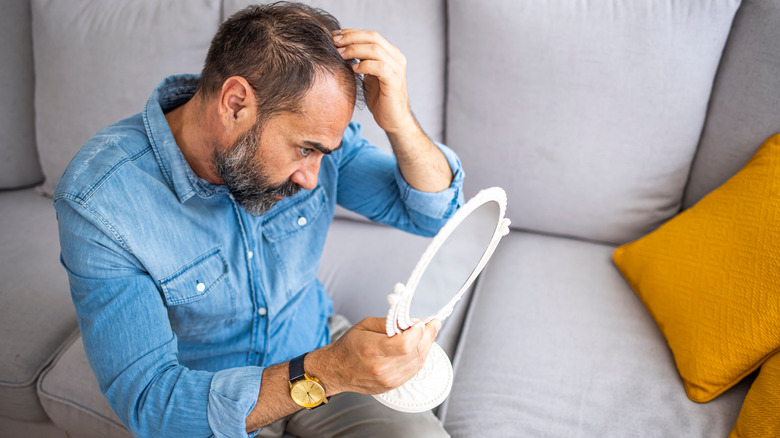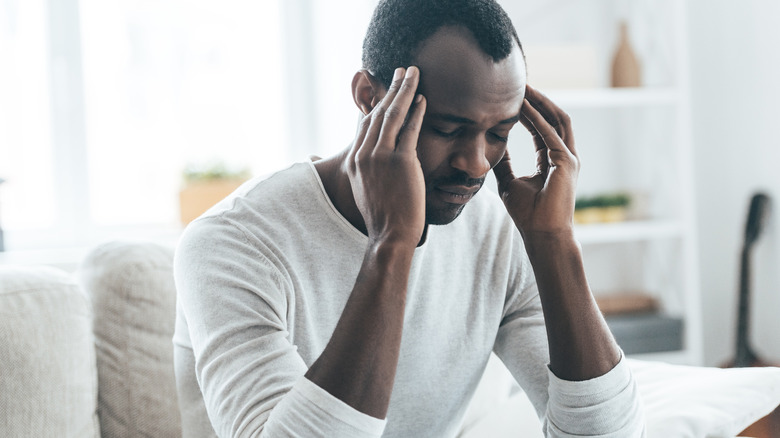What Side Effects Are Commonly Associated With Finasteride?
Finasteride is a medication used to treat male pattern hair loss and benign prostatic enlargement, according to the experts at the National Health Service (NHS). It is a 5-alpha-reductase inhibitor, which means that it blocks the conversion of testosterone into dihydrotestosterone (DHT), a hormone that is responsible for the shrinkage of hair follicles and the growth of the prostate (via the Cleveland Clinic). Fortunately, the reduction in the prostate gland's size can help relieve symptoms, such as difficulty urinating or frequent urination.
Finasteride, also known as Propecia, is approved by the United States Food and Drug Administration (FDA) for treating male pattern hair loss in those between the ages of 18 and 41. While finasteride is generally considered safe to take, like most medications approved by the FDA, it can cause side effects. In fact, 1 in 100 people is noted to have side effects, and 1 in 1000 people have experienced more serious effects.
Common side effects of finasteride
One of the most commonly reported side effects of finasteride is decreased libido. Unfortunately, some men may continue to experience sexual side effects even after stopping finasteride. Another potential side effect of finasteride is erectile dysfunction. Men who experience this side effect may have difficulty getting or maintaining an erection. For some, the medication may cause them to experience breast tenderness, along with other widely reported finasteride side effects, including skin rashes, headaches, dizziness, feelings of weakness, and swelling in the arms, hands, legs, or feet.
In rare cases, finasteride has been associated with other effects, such as depression, suicidal thoughts, and high-grade prostate cancer, according to The Check Up by SingleCare. However, luckily, these side effects are rare. Nonetheless, if you do happen to experience any of them, it's always best to speak to your healthcare provider to determine if further evaluation is needed.
What is the correct dosage of finasteride?
Finasteride is taken orally in the form of a tablet and is typically prescribed at a dosage of 1 mg per day for hair loss. It is effective at helping with the progression of hair loss in most users, although it may take several months of treatment before results are visible. However, keep in mind that it must be taken continuously to maintain the benefits. If not, hair loss will resume within a few months of discontinuing finasteride.
As for treating the enlarged prostate, finasteride is typically prescribed at a higher dosage of 5 mg per day. Just like for hair loss, finasteride for an enlarged prostate must most likely be taken continuously to maintain the benefits. However, as with all medications, it is important to follow the instructions provided by the healthcare provider and report any concerning symptoms to a medical professional.



